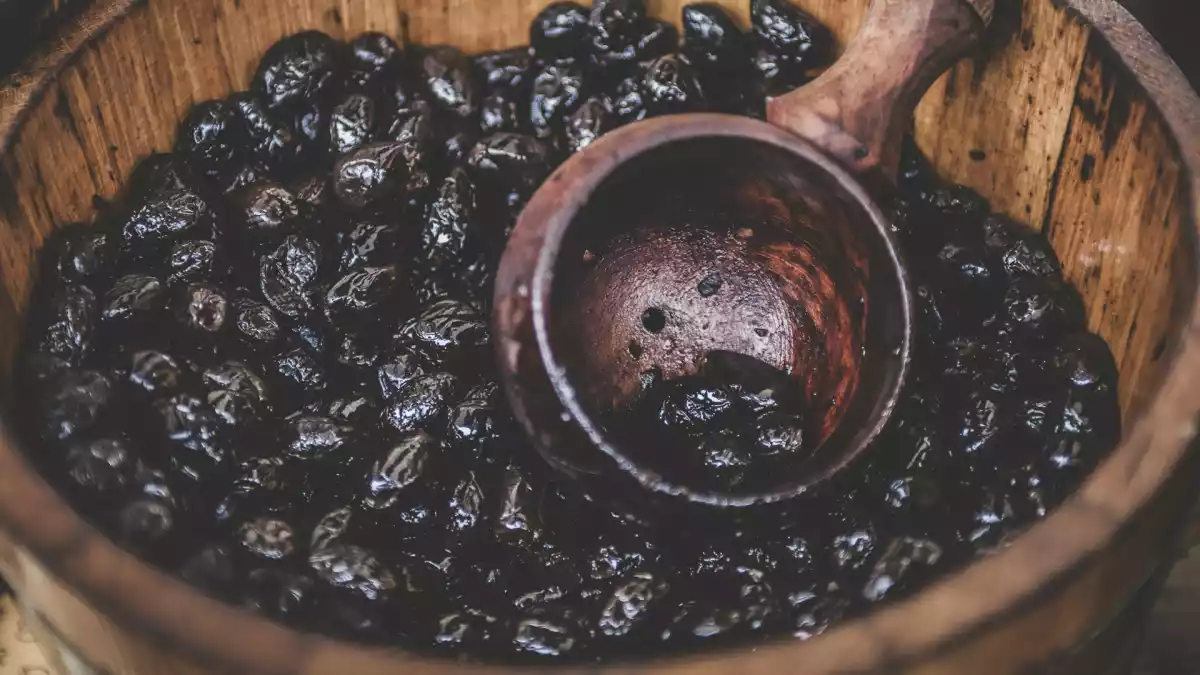Don't be fooled: Are your olives really black or dyed?

Black olives are an essential ingredient in Greek salads, when preparing bacalhau a bras, to dress pizzas, a tajine or as a base for a tapenade, black olives are an essential ingredient in gastronomy, especially in Mediterranean cuisine. Their characteristic flavor, with slightly bitter and saline notes, makes them the ideal complement to many dishes and appetizers. In addition to their diverse uses in cooking, they are a rich source of healthy fats, antioxidants and minerals, making them a nutritious option in a balanced diet. But did you know that not all black olives found in the supermarket are the same? It is possible that the black color of the ones you buy has not been acquired naturally, but have been artificially dyed. How do you know? Are they nutritionally equally beneficial? We'll tell you all about it!
1. What kind of black olives can we find in the supermarket?
Many of us might think that the black olive is a different fruit from the green olive, but the reality is that its color depends on the degree of ripening. However, this is not always the case. In the supermarket we can find two types of black olives:
- Black olives that obtains its color naturally: these are olives that ripen completely on the tree, acquiring their dark color progressively. As they stay longer on the tree, the olive begins to dehydrate naturally. They are then cured in brine for months (sometimes even a year). The olives ferment naturally, losing their bitterness and acquiring an unmistakable texture and flavor. As we can see, it is a long process that requires patience, and from harvesting until they are ready to be marketed, between a year and a half and two years may pass.
- Industrially dyed olives: First, the green olive is harvested and immersed in a soda bath (NaOH) to eliminate its bitter taste. After rinsing, it is placed in a brine that softens it and gives it a characteristic aroma. Finally, to give it its black color, it is immersed in iron gluconate, a food additive that gives it that shiny black tone. This whole process takes a matter of days. Although it is a legal and non-toxic procedure, it affects the final product significantly.
2. The industrial trick: oxidation and ferrous gluconate Why?
To respond to the constantly increasing demand, the agri-food industry resorts to an accelerated method: transforming green olives into black olives through an industrial process.
As we have seen, for olives to acquire their natural black color, months, even years, are required between the ripening of the fruit and its curing. This slow and costly process is incompatible with large-scale production. To cope with the huge demand for black olives, the industry opts to speed up the process and dye green olives by oxidation and ferrous gluconate. In a matter of days, visually attractive and uniform black olives are obtained, which can be supplied throughout the year. Clearly, the traditional method of obtaining black olives is not commercially viable.
3. Are they nutritionally equal?
From a nutritional point of view, there are important differences between the two:
Natural black olives:
They retain a higher content of antioxidants and polyphenols, essential for cardiovascular health. Their prolonged fermentation favors the formation of compounds beneficial to the intestinal microbiota.
Artificially dyed black olives:
They may lose part of their antioxidants due to industrial oxidation. Their flavor and texture is less complex than that of natural olives.
Although both options are fit for consumption and safe, natural black olives offer a superior nutritional value, since their ripening and curing process better preserves their healthy properties.
4. How to distinguish a genuine black olive?
For olive lovers who wish to enjoy a more authentic product, there are a few tricks to differentiate natural black olives from dyed olives.
- First of all, natural black olives tend to be less uniform in color, with shades ranging from dark brown to black, and their skin may have small wrinkles and irregularities. Artificially oxidized olives, on the other hand, are usually a homogeneous shiny black.
- In general, genuine black olives usually indicate their variety and curing method on the packaging (such as "brine-cured" or "dry-cured").
- Another key criterion is price. There can be a difference of up to 5 times more between a protected origin black olive and a white label one.
- But it is much easier than that. Just take a quick look at the ingredient list: if compounds such as ferrous gluconate or ferrous lactate appear, it is very likely that these are dyed green olives.
You may also be interested in:
 Patricia González
Patricia González
Comments